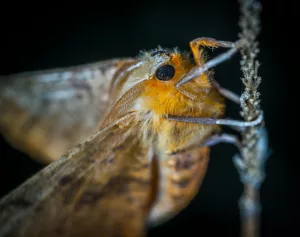Gardening is a rewarding hobby that connects us to nature while providing a meditative and creative outlet. Yet, with so much information available, it can be easy to fall for some well-intentioned but misleading advice. Here, we’ll dive deeper into common gardening myths, offering practical insights to help you cultivate a thriving garden. Many gardeners believe that sunlight is the holy grail for plant growth. While it’s true that sunlight is essential, not all plants bask in its glory. Plants like hostas, ferns, and impatiens thrive in shaded areas, making them perfect for parts of your garden that receive limited sunlight. If you’re working with a shady garden, consider creating a layered planting design with taller shade-tolerant shrubs and trees, such as dogwoods or Japanese maples, providing a canopy for smaller plants. This mimics a natural forest ecosystem and can lead to a lush, vibrant garden even with limited sunlight.
Understanding Plant Light Needs
When planning your garden, it’s crucial to match plants with their preferred light conditions. Partial Shade Plants: Certain vegetables like lettuce, spinach, and radishes can also tolerate partial shade, extending your planting options. Full Sun Plants: Conversely, for areas that receive abundant sunlight, plants such as sunflowers, tomatoes, and peppers flourish. Consider the intensity and duration of sunlight your garden receives throughout the year, as seasonal changes can significantly impact light levels.
Case Study: Shade Garden Success
A client in Seattle faced challenges with a predominantly shady backyard. By selecting a mix of shade-loving perennials and strategically placing reflective surfaces to maximize natural light, they turned a potential drawback into an asset. Their garden now boasts lush greenery and vibrant blooms, illustrating that understanding and adapting to light conditions can transform your gardening experience.
Fertilizer seems like the magic potion that could turn any garden into a lush paradise. However, the mantra “more is better” doesn’t hold here. Over-fertilizing can result in nutrient imbalances and burned roots. Plants like tomatoes, for example, are particularly susceptible to excess nitrogen, leading to lush foliage but poor fruit production. Always start by conducting a soil test to understand which nutrients are lacking before reaching for the fertilizer. Consider using organic options like compost or well-rotted manure that release nutrients slowly and are less likely to cause harm.
Tailoring Fertilization to Plant Needs
Every plant has specific nutrient requirements. Annuals and Perennials: Annuals benefit from fertilizers high in phosphorus for blooming, while perennials may require more balanced nutrients to sustain growth over multiple seasons. Vegetable Gardens: Use a targeted approach for vegetables; root crops like carrots need more potash, whereas fruiting plants benefit from higher phosphorus levels.
The Role of Micronutrients
Beyond the primary nutrients—nitrogen, phosphorus, and potassium—plants rely on micronutrients such as iron, manganese, and zinc. Deficiencies often manifest as discoloration or stunted growth. By incorporating trace minerals into your fertilization routine, you can address these less obvious but critical needs.
The temptation to water daily is strong, especially during hot months. However, the key is consistency, not frequency. Overwatering can suffocate roots and encourage diseases like root rot. To avoid this, check your soil moisture by inserting a finger into the soil up to the second knuckle; if it feels dry at that depth, it’s time to water. Drip irrigation systems or soaker hoses can be excellent investments, providing a slow, steady supply of water directly to the roots, reducing evaporation and ensuring deep watering.
Efficient Watering Techniques
Deep Watering: Encourage deep root growth by watering less frequently but more thoroughly. This practice strengthens plants’ drought resistance. Morning Watering: Water in the early morning to minimize evaporation and prevent fungal diseases that thrive in damp, cool conditions. Rainwater Harvesting: Collect rainwater in barrels to reduce reliance on municipal water and ensure chemical-free hydration for your garden.
Case Study: Water-Smart Garden Design
In arid regions like Arizona, a client successfully implemented xeriscaping principles—using drought-tolerant plants and efficient irrigation systems. Their garden not only conserved water but also thrived with minimal maintenance, demonstrating the potential of smart water management.
Insects in the garden often elicit a sense of dread, but not all are foes. Beneficial insects like ladybugs, lacewings, and parasitic wasps provide natural pest control. Encouraging these insect allies can be as simple as planting diverse flowers and herbs such as dill, fennel, and daisies that attract them. By fostering a biodiverse environment, you can reduce reliance on chemical pesticides and create a self-regulating ecosystem.
Attracting Beneficial Insects
Companion Planting: Pair plants strategically to attract beneficial insects. For example, marigolds can deter nematodes, while nasturtiums attract aphids away from other plants. Insect Hotels: Create habitats for beneficial insects by setting up insect hotels, which provide shelter for pollinators and pest controllers alike.
Case Study: Biodiversity Boost
A gardener in New York City transformed their rooftop garden by introducing a variety of flowering plants and herbs. As a result, the garden became a haven for pollinators, significantly improving plant health and yield while reducing pest issues naturally.
Adding gravel to plant pots is a misunderstood practice. This method is intended to improve drainage, but it often does more harm than good. Instead of gravel, ensure your pots have adequate drainage holes and use a high-quality potting mix with components like perlite or vermiculite that improve aeration and drainage. For plants particularly sensitive to waterlogging, like succulents, consider using pots made from breathable materials such as terracotta.
Potting Mix Perfection
Custom Blends: Adjust potting mixes based on plant needs. For succulents, mix sand and perlite to enhance drainage. Pre-made Options: Many garden centers offer specialized mixes for orchids, cacti, and other plant types, taking the guesswork out of potting.
Case Study: Successful Container Gardening
An urban gardener in Chicago used self-watering containers and customized soil mixes to maintain a thriving balcony garden. By avoiding common drainage mistakes, they ensured healthy growth for a variety of plants, from herbs to decorative flowers.
Pruning is a vital practice that, when done correctly, can invigorate plants. However, excessive pruning can shock and stunt growth. Focus on removing dead or diseased branches and gently shaping the plant. For flowering shrubs, timing is crucial; prune spring-flowering plants right after blooming, while summer bloomers should be pruned in late winter or early spring. This ensures you don’t accidentally remove buds that will produce the next season’s flowers.
The Art of Pruning
Pruning Tools: Invest in quality tools like bypass pruners and loppers for clean cuts that minimize damage. Pruning Techniques: Learn techniques such as thinning, heading, and rejuvenation pruning to maintain plant structure and health.
Case Study: Reviving a Neglected Garden
A homeowner in Atlanta revitalized their overgrown yard by systematically pruning trees and shrubs. By following seasonal guidelines and using proper techniques, they improved air circulation, light penetration, and overall plant vigor, transforming the garden into a flourishing oasis.
Organic pesticides are often considered harmless, but this is a misconception. Even organic solutions can disrupt the balance of your garden if used excessively. Neem oil, for instance, is effective but can kill beneficial insects if overused. Integrated pest management (IPM) combines cultural, biological, and mechanical methods with minimal pesticide use to manage pest populations effectively. Rotate crops, plant companion species, and introduce predator insects to keep harmful pest populations in check.
Implementing IPM Strategies
Cultural Controls: Modify planting practices to minimize pest attraction, such as selecting pest-resistant varieties and maintaining garden hygiene. Biological Controls: Introduce natural predators and use microbial solutions, like Bacillus thuringiensis, to target specific pests without harming beneficial organisms.
Case Study: IPM in Action
A community garden in Portland adopted IPM practices, reducing pesticide use by 80% while maintaining healthy, productive crops. By fostering biodiversity and using targeted interventions, they created a sustainable model for pest management.
Mulch is a gardener’s best friend, but when applied incorrectly, it can harm plants. Keep mulch a few inches away from the stems to allow air circulation and prevent rot. A mulch layer of about 2-3 inches is ideal for conserving moisture and suppressing weeds. In vegetable gardens, straw or shredded leaves make excellent mulches that break down over the growing season, adding organic matter to the soil.
Mulching Mastery
Types of Mulch: Choose the right mulch for your needs—bark mulch for aesthetics, straw for vegetable gardens, or rock mulch for areas with heavy rainfall. Seasonal Mulching: Apply heavier mulches in fall for insulation, and lighter, more breathable options in spring to promote warming soil.
Case Study: Mulch for Microclimates
An innovative gardener in San Francisco used different mulch types to create microclimates within their garden, optimizing conditions for various plant groups. This strategic approach improved growth rates and reduced water usage.
Composting is a fantastic way to recycle organic waste and enrich your soil, but concerns about pests can deter gardeners. To keep pests like rodents at bay, avoid adding meat, dairy, or oily foods to your compost pile. A well-maintained compost pile with a good mix of green (nitrogen-rich) and brown (carbon-rich) materials and regular turning will decompose efficiently without attracting unwanted visitors. Consider using a compost bin with a lid for added security.
Composting Essentials
Layering Techniques: Alternate layers of greens and browns to balance moisture and aeration. Compost Accelerators: Use natural accelerators like alfalfa meal or finished compost to boost microbial activity and speed up decomposition.
Case Study: Urban Composting Success
An apartment dweller in Philadelphia successfully composted kitchen scraps using a worm bin. By managing moisture and feeding the worms appropriately, they produced rich compost for their potted plants without attracting pests or causing odors.
Houseplants can bring life to indoor spaces, and many can thrive with the right conditions. Peace lilies, snake plants, and pothos are excellent choices for beginners. Understanding light conditions is crucial; north-facing windows provide indirect light, while south-facing ones offer direct sunlight. Group plants with similar needs together to create microclimates and increase humidity, which many tropical houseplants prefer.
Houseplant Happiness
Humidity Hacks: Use pebble trays or humidifiers to maintain optimal humidity levels for tropical plants. Rotating Plants: Rotate plants regularly to ensure even light exposure and prevent lopsided growth.
Case Study: Indoor Jungle Creation
A plant enthusiast in Boston transformed their living room into a thriving indoor jungle by carefully selecting plants suited to different light conditions and using stylish, functional plant stands to maximize space and light exposure.
Finally, the notion that any soil can support any plant is perhaps the most misleading of all gardening myths. Plants like azaleas and blueberries require acidic soil, while others, like lavender, prefer alkaline conditions. Conducting a soil test can reveal pH levels and nutrient deficiencies, allowing you to amend the soil accordingly. Add lime to raise pH or sulfur to lower it, and incorporate organic matter to improve soil structure and fertility.
Navigating Soil Science
Soil Amendments: Tailor soil amendments to plant preferences and existing soil conditions. Use gypsum to improve clay soil structure or sand to enhance drainage in dense soils. Creating Raised Beds: In areas with poor soil quality, consider raised beds filled with customized soil mixes to provide an ideal growing environment.
Case Study: Soil Transformation
A gardener in Denver faced challenges with alkaline, clay-heavy soil. By implementing a series of amendments, including sulfur and organic matter, they successfully cultivated a diverse range of plants, from acid-loving azaleas to Mediterranean herbs, demonstrating the power of targeted soil management.
Gardening is as much about learning and adapting as it is about planting and nurturing. By debunking these myths and understanding your garden’s unique needs, you can create a thriving, sustainable, and beautiful outdoor space. Remember, each garden is a living ecosystem, and by working with nature rather than against it, you’ll cultivate not just plants, but a lifelong passion.



